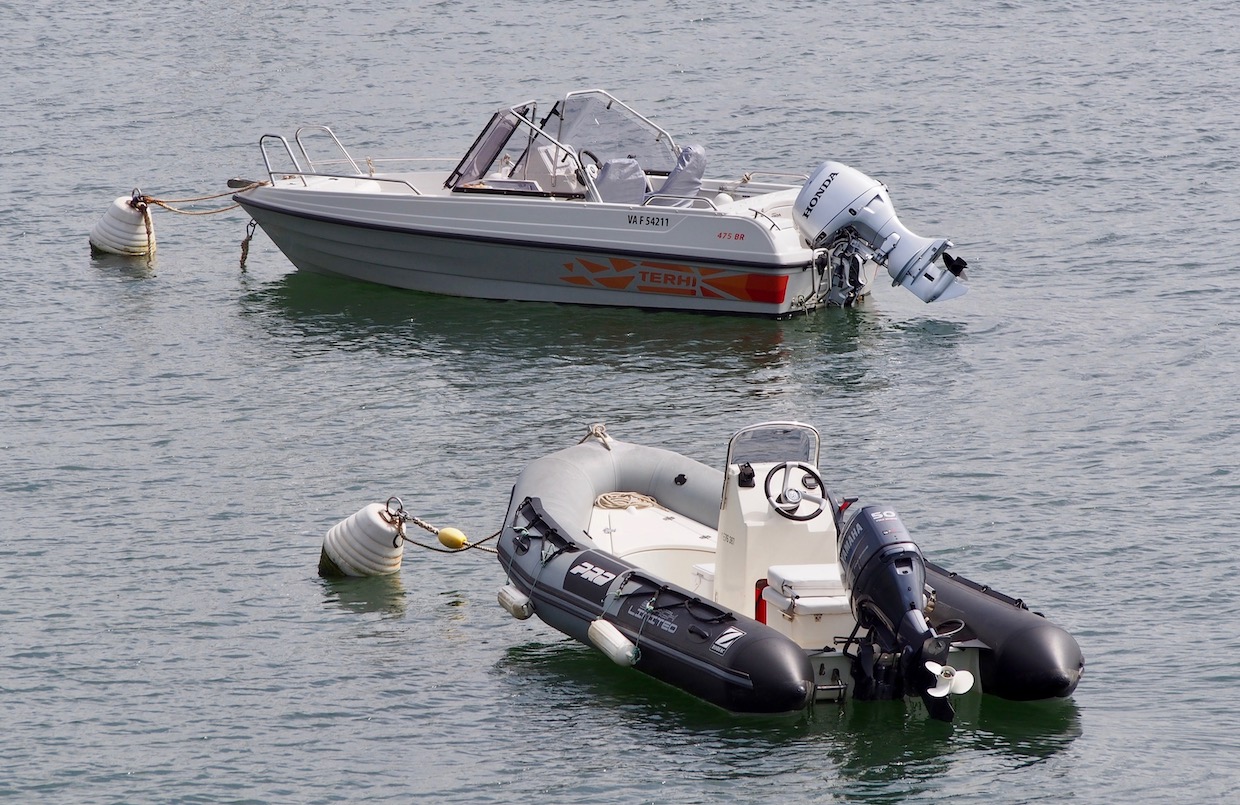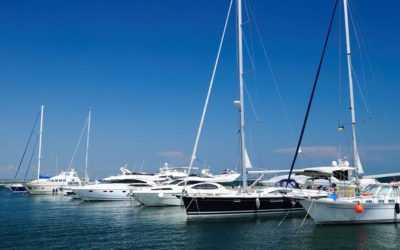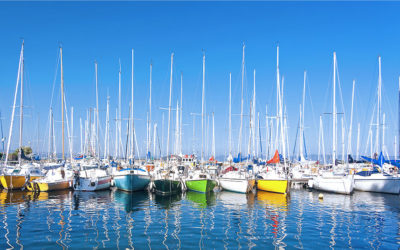If there’s one debate that really gets people talking on boat forums, then it’s which material inflatables should be made from! However, it’s not just about only materials, because there are also different construction methods. How do they compare!
Summary
1 – Synthetic rubber
2 – Small or large series
3 – Maintenance without too much pressure
4 – Patches
When choosing a used inflatable, the future owner is faced with the choosing the material the tubes are made from! PVC? Or Hypalon? They will then see opinions about these two materials that are about as substantiated and impartial as if the question was about choosing a cheeseboard or a pudding for dessert. Keel or drift? Mac or PC? So it’s mainly (as for the previous questions), about achieving similar results by different means.
Each of these 2 fabrics have their own qualities, and your choice will depend on how you’re going to use the boat.
1. Synthetic rubber
Hypalon, (a trademark of DuPont), is a synthetic elastomer with qualities that are clearly superior to those of natural rubber. Its main features are excellent resistance to thermal stress, and reduced sensitivity to UV and hydrocarbons. Also, its mechanical qualities give it great robustness combined with the flexibility of rubber.
This material is cold bonded. This is a construction process that is difficult to industrialise because it requires a massive workforce for assembly. So, it is a material that tends to be used for small series. This is a heavy, robust fabric, that is well suited to service boats that remain afloat all year round and that must be capable of withstanding certain conditions. The price of the basic material added to the labour time required, makes boats made from Hypalon significantly more expensive than those made from PVC.
2. Small or large series
PVC, or polyvinyl chloride, is a thermoplastic which has the advantage of enabling an industrial boat production process. In fact, the process of cutting the parts during assembly is achieved through high frequency bonding. This makes mass production easier so these boats can be sold at far more affordable prices than those produced using Hypalon.
With PVC, you get light boats but that are relatively sensitive to over-inflation in the event of exposure to high heat. There are excellent PVC boats, but this material tends to be favoured for pleasure boats that are used with some care. It’s perfect for a wintered boat under cover. It’s also ideal for a tender or dinghy stored in a locker. As long as you give it a certain amount of attention and maintenance, a PVC boat will last as long as a boat made from Hypalon.

3. Maintenance without too much pressure
Whatever material it is made of, the inflation pressure of an inflatable is crucial. In fact, it is an average value which varies according to the outside temperature. We have mentioned that PVC is more sensitive to over inflation, so this is all the more reason to use a well calibrated pressure gauge to check the pressure. If you don’t have one of these devices (and with time), you learn to estimate the pressure by pressing down with your fist on the back of the tube. It shouldn’t sink in much, otherwise, the pressure needs adjusting.
When it’s under inflated, the boat will lose manoeuvrability and it will consume more fuel. If it’s over inflated, you’ll be putting increased wear on the seams and they will fatigue. Consider rinsing your boat regularly to get rid of the salt. When you over winter it, you should ideally protect it from light and bad weather. Ideally the boat should be stored barely inflated, just enough to keep its shape.
4. Patches
An inflatable is relatively easy to repair and a careful boat user should be able to make repairs themself within reason. On the other hand, each type of material requires a different repair kit and more particularly a specific glue. For the best results, do not rely too much on the repair kit that comes with the boat as the products it contains are likely to be out of date!
Choose a sunny day and work on a flat surface, sheltered from the sun and wind. After cutting out a patch that covers at least 10 times the repair, very carefully degrease the surfaces to be assembled before applying a thin layer of glue on the boat and on the patch. As soon as the glue no longer adheres to your finger, you should add another layer. The most important thing is to press the 2 surfaces together very firmly immediately after patching. If you don’t have a paint roller, the repair can be hammered using a rubber mallet.
To sum things up, boats made from Hypalon are heavier and more expensive, but also more resistant to UV light, oil and heat. As they’re more sturdy, they don’t need as much maintenance to keep on lasting. You should opt for this material if you have a boat that will remain afloat or that is exposed all year round to sun and bad weather. For less “rough” or more occasional use, such as a tender, or a boat that is overwintered or stowed away in bad weather, PVC is perfect and much less expensive.
This article was written by Olivier Chauvin.

